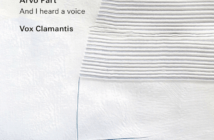This page is also available in / Cette page est également disponible en:
Français (French)
-
DG4
Every era has its defining violinist. For the second half of the 19th century it was the avuncular Joseph Joachim, for the first third of the 20th the mischievous Fritz Kreisler. Then came Heifetz, Menuhin, Perlman, briefly Vengerov and Anne-Sophie Mutter. If there is a defining violinist in the present century I suspect it is Hilary Hahn.
American to her pop-socks, forged from age ten in the Curtis foundry, she has hardly put a career foot wrong, limiting her concert engagements and taking time out to have two daughters. At 43, she stands head and a shoulder pad taller than the nearest contender – and there are very few who come anywhere closer than a green-room minder. She flits between light classics – the Korngold concerto – and the deadly serious.
Her latest project consists of the six solo sonatas by the Belgian virtuoso Ysaye, a set of exercises as testing technically as they are intellectually. A solo piece for violin is a glass of plain water. Only the truly accomplished can fill it with colour and taste. Ysaye left some clues by investing the sonatas with characters of six contemporaries, including Kreisler and the Frenchman Thibaud. But who apart from fiddle-geeks would recognise their style nowadays, and why does it matter?
Hahn takes the set as a movie storyboard. The first is a conversation between Bach and Stravinsky, the second a meditation on the Dies Irae, the third a Balkan travelogue, and so on. The playing is never less than commanding and the narrative just grips. This is what it means to be an epochal violinist: the ability to make all music sound immortal.
This page is also available in / Cette page est également disponible en:
Français (French)













